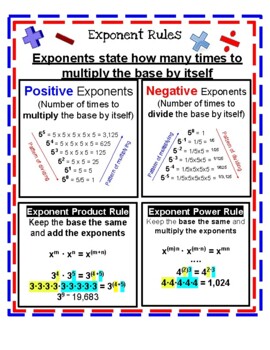Exponent Rules - Easy for Anyone to Understand
Prep Time Savers
5 Followers
Prep Time Savers
5 Followers
Description
Exponents are simple if you learn them correctly. BUT, if not, they become confusing. Students must internalize the exponent rules to go on and solve more complicated problems. This includes two anchor charts. The first chart is basic exponent rules. The second is when the curriculum gets more complicated.
Whether you are teaching with distant learning or face to face, your students need an easy to use resource that will help them master exponents.
These pages are the property of Prep Time Savers. You may share this resource with your students and any teacher that you directly plan and collaborate with. Enjoy!
Total Pages
Answer Key
N/A
Teaching Duration
N/A
Last updated Jan 28th, 2022
Report this resource to TPT
Reported resources will be reviewed by our team. Report this resource to let us know if this resource violates TPT’s content guidelines.
Standards
to see state-specific standards (only available in the US).
CCSS7.NS.A.3
Solve real-world and mathematical problems involving the four operations with rational numbers.
CCSS6.EE.A.1
Write and evaluate numerical expressions involving whole-number exponents.
CCSS8.EE.A.1
Know and apply the properties of integer exponents to generate equivalent numerical expressions. For example, 3² × (3⁻⁵) = (3⁻³) = 1/3³ = 1/27.
CCSS8.EE.A.2
Use square root and cube root symbols to represent solutions to equations of the form 𝘹² = 𝘱 and 𝘹³ = 𝘱, where 𝘱 is a positive rational number. Evaluate square roots of small perfect squares and cube roots of small perfect cubes. Know that √2 is irrational.
CCSSHSN-RN.A.1
Explain how the definition of the meaning of rational exponents follows from extending the properties of integer exponents to those values, allowing for a notation for radicals in terms of rational exponents. For example, we define 5 to the 1/3 power to be the cube root of 5 because we want (5 to the 1/3 power)³ = 5 to the (1/3)(3) power to hold, so (5 to the 1/3 power)³ must equal 5.



